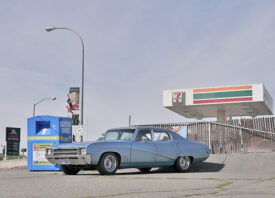Search this site
A Photographic Duet of Flesh & Spirit, Earth & Animal

© Antoine D’agata

© Emmanuel Monzon
Consider our propensity for seeing duality everywhere we go, on a quest to reduce the dialectic to a conversation centered in an “either/or” proposition as though half is greater than the whole. One of the primary flaws of binary thought is the way it triggers a hierarchical impulse that is patently false. It is neither “either/or” but “and” — the perception of the holistic nature of the universe.
On the whole, this takes more effort to assert, to swim against tides that define our radically polarized times. Sometimes it’s less an effort and more a response to what already exists. For French photographers Antoine D’agata and Emmanuel Monzon, this dynamic revealed itself in the exhibition of their work by Charbon Space in Fine Art Asia 2018.
In the photographs of Antoine D’Agata, the very fabric of the flesh becomes a radiant field of energy, at once murky and diaphanous as though we might dissolve and disintegrate into our spiritual essence for a taste of eternity. In D’agata, we feel an insistent intensity, the impassioned whisper of a wordless truth that knows that pain and pleasure exist like the ouroburo, a snake eating its tail.
In counterpoint is the work of Emmanuel Monzon, which takes us to the very edges of urban sprawl. Here solidity reigns supreme, as “progress” eats its way into the landscape, ignoring the perils of climate change. In Monzon’s work, the see the last moments of the natural landscape, before the earth as it stood for millions of years is desecrated by our limitless desire for expansion. Monzon captures the banality of it all, the essential ugliness of the unstoppable development of the earth.
The soft, beige light of Monzon’s work reads like a sedative, a seductive little pill that lulls us into a false sense of entitlement as it alienates us from our true selves. Here, in this perfectly plastic world of picture perfect harmony, D’agata’s photographs acquire a new layer of depth as we consider his choice of subjects — people who could not go along with illusions we assert in the name of “normalcy.”
D’agata looks at people who have fallen through the cracks, lost to prostitution, drugs, and violence. Theirs is a story that has been widely capitalized on by the mainstream media and entertainment industries, easy targets for moralizers, provocateurs, and opportunists. D’agata denies these narratives in favor of something more profound: an understanding comes from bearing witness to the sacred soul.
His is a journey into the interior, into depths without end that can never be known, the perfect complement to the insatiable desire to escape the truth that lies here that drives us to consume the earth as though we are the greatest form of pestilence nature has ever known.

© Antoine D’agata

© Emmanuel Monzon

© Antoine D’agata

© Emmanuel Monzon

© Antoine D’agata



